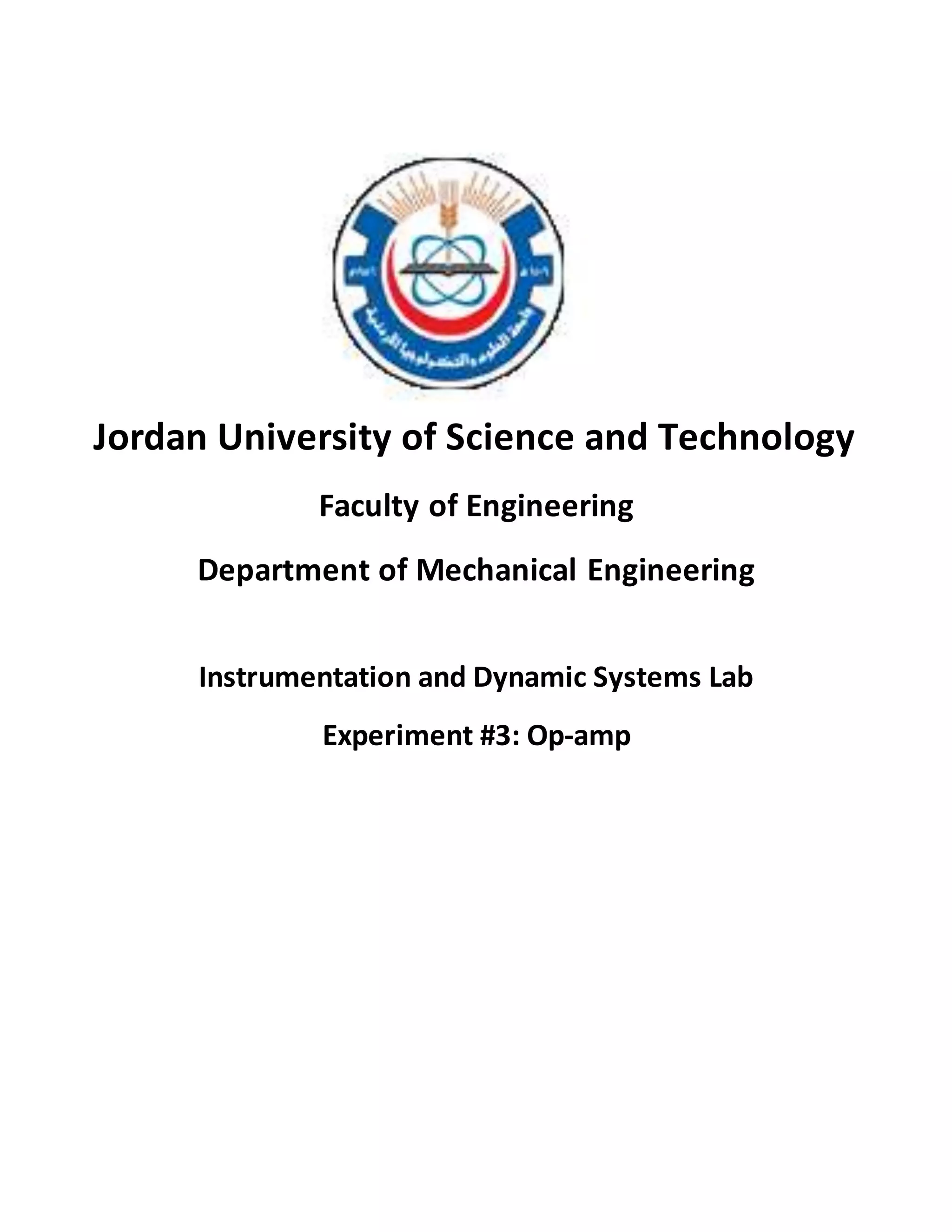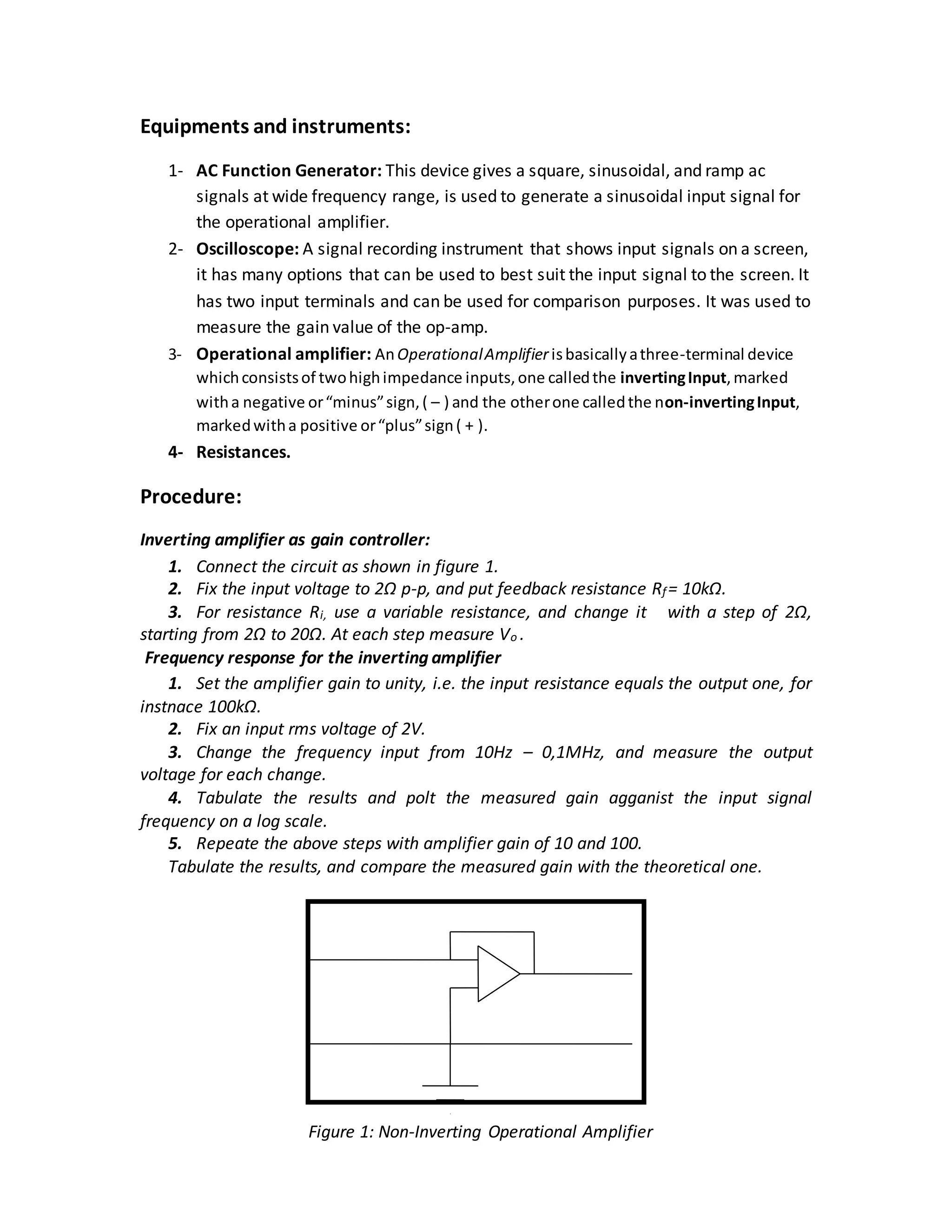This experiment demonstrates an inverting amplifier using operational amplifiers (op-amps) that amplify input voltage signals while inverting their polarity. Key factors such as signal frequency, theoretical gain, and input signal amplitude are evaluated, highlighting that high gain values lead to poor performance and clipping occurs when input voltage exceeds certain limits. The results show discrepancies between theoretical and measured gains, emphasizing the impact of input resistance and frequency on op-amp performance.







